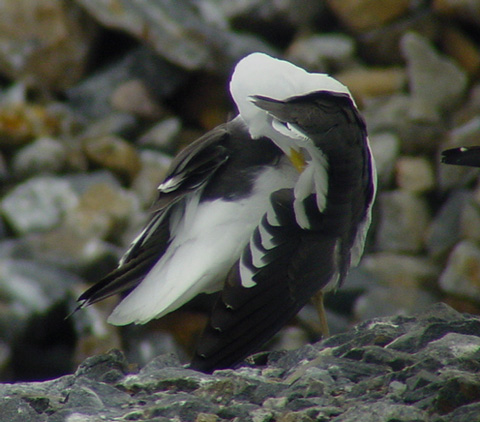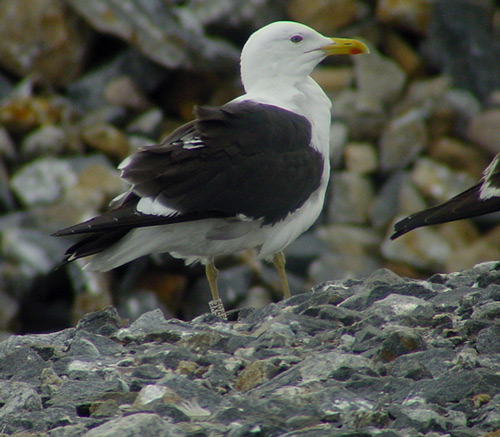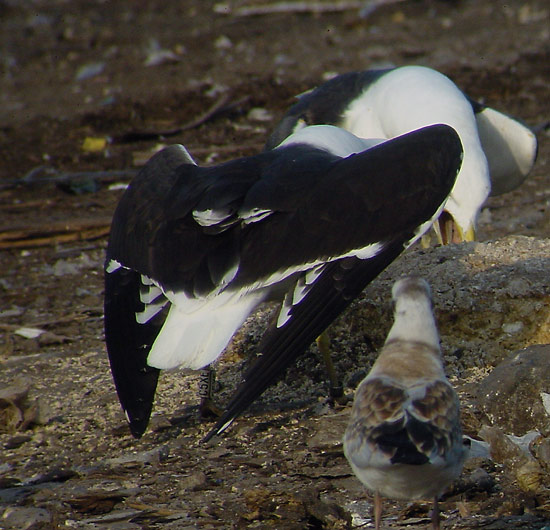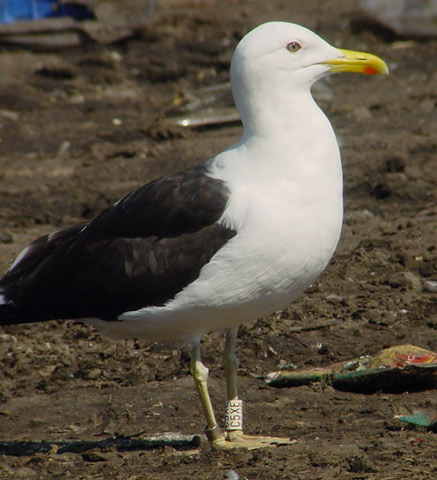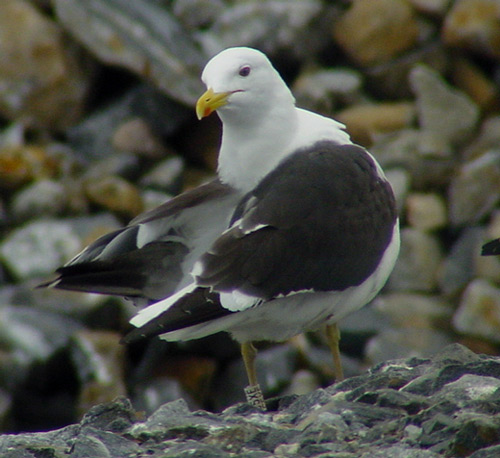
(5 images) Larus fuscus fuscus 3cy C5XE, July 10-16 2003, Tampere, Finland (61.33N 24.59E).
C5XE was ringed in Kanala, Finland
(61,41N
24,06E);
ringed as pullus on June 28 2001.
Recorded
at Tampere:
2001-08-24,
2003-05-20,
2003-05-24, 2003-05-25, 2003-05-29, 2003-05-31, 2003-06-01, 2003-06-04,
2003-06-07, 2003-06-14, 2003-06-15, 2003-06-16, 2003-06-17, 2003-06-18,
2003-06-20, 2003-06-22, 2003-06-28, 2003-06-29, 2003-07-01, 2003-07-02,
2003-07-05, 2003-07-06, 2003-07-09, 2003-07-10, 2003-07-11, 2003-07-12,
2003-07-13, 2003-07-14, 2003-07-15, 2003-07-16, 2003-07-20, 2003-07-23,
2003-07-24, 2003-07-26, 2003-07-27, 2003-08-02, 2003-08-03.
Larus fuscus fuscus in 2cy often returns
with completely replaced primaries and secondaries. In 3cy, fuscus more
often shows a clear division between fresh inner primaries and older outer
primaries, the inner primaries often showing neat white tips and the outer
primaries often second generation-like with rounded tips and paler bleached
brown. The arrested moult in the primaries is often reflected in the secondaries
and (to a less extend) in the tail-feathers as well. The older tail-feathers
(often R5 is older) still show a broad dark sub-terminal band.
3cy fuscus often have some black markings on the bill, which is otherwise
much adult-like, with a clear red gonydeal spot. The colour of the naked parts
are adult-like as well.
The scapulars in 3cy are often completely adult-like, lacking internal patterns;
plain blackish grey with a mahogany hue on the older feathers. Most wing-coverts
and tertials are adult-like blackish grey as well, but often 3cy birds show some
very bleached pale brown wing-coverts, normally in the greater covert bar and in
the upper rows of the lesser coverts. These bleached wing-coverts accentuate the
jumpy sequence in the last wing-covert moult cycles, as there is often no clear
pattern in location of these bleached feathers. Head and body feathers normally
are snow-white by July.
C5XE was ringed as pullus at Kanala,
Finland on June 28 2001, now in 3cy. This 3cy fuscus has four inner primaries, P1-P4,
which appear fresher and may apply to 4th generation. P5-P10 are older, with a mirror on P10 and very small tips on the outer primaries.
Nevertheless, P1-P10 are
probably all third generation flight feathers, moulted on the wintering grounds,
prior to northbound migration. These inner primaries are projected by the
tertials and less vulnerable to wear and tear, and this may explain the
division. When there is a generation division, one often notice a similar
division in the primary coverts as well, which is not the case here. Also, there
is hardly any difference in the grey inner-web of P4 and P5.
The (outer) secondaries
have been replaced as well. All rectrices appear fresh with pretty neat tips and
are white without
any black markings. In general this individual looks much adult-like with no
black on the bill, but as can be seen in many 3cy fuscus, there are often
features of immaturity: here dark speckling in the iris.
See also C0XC and C8XC, ringed on the same location, the same date.

